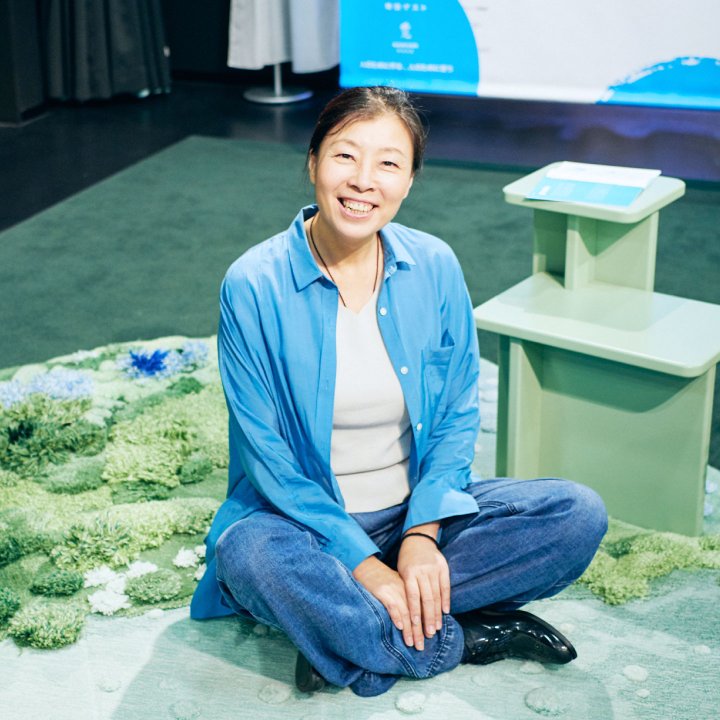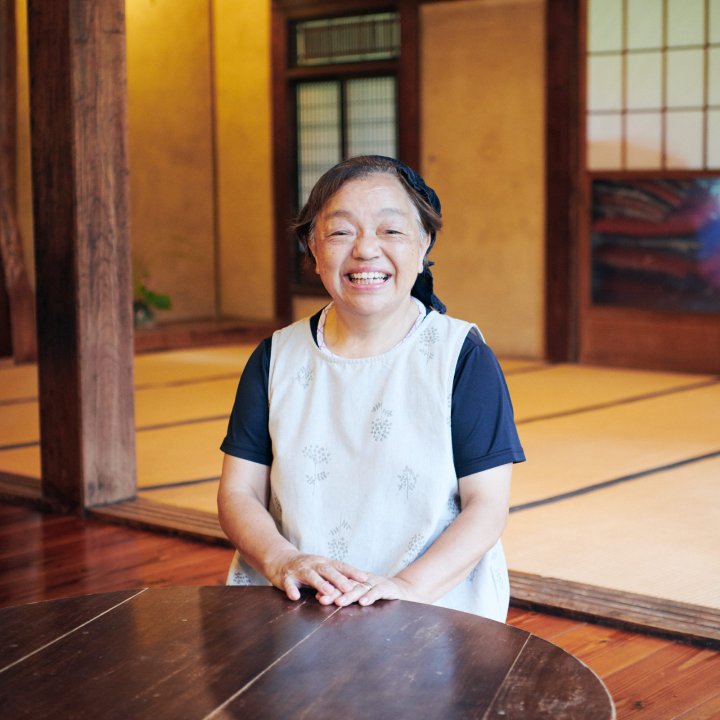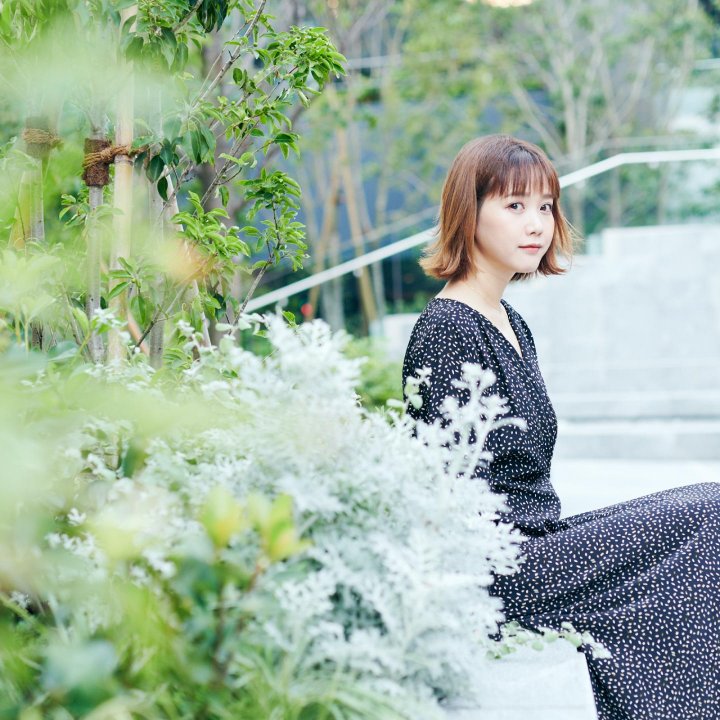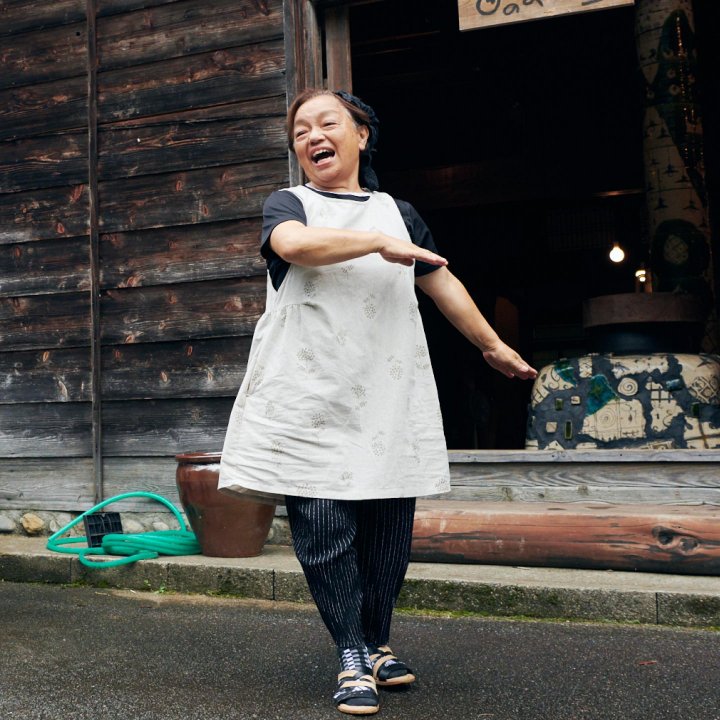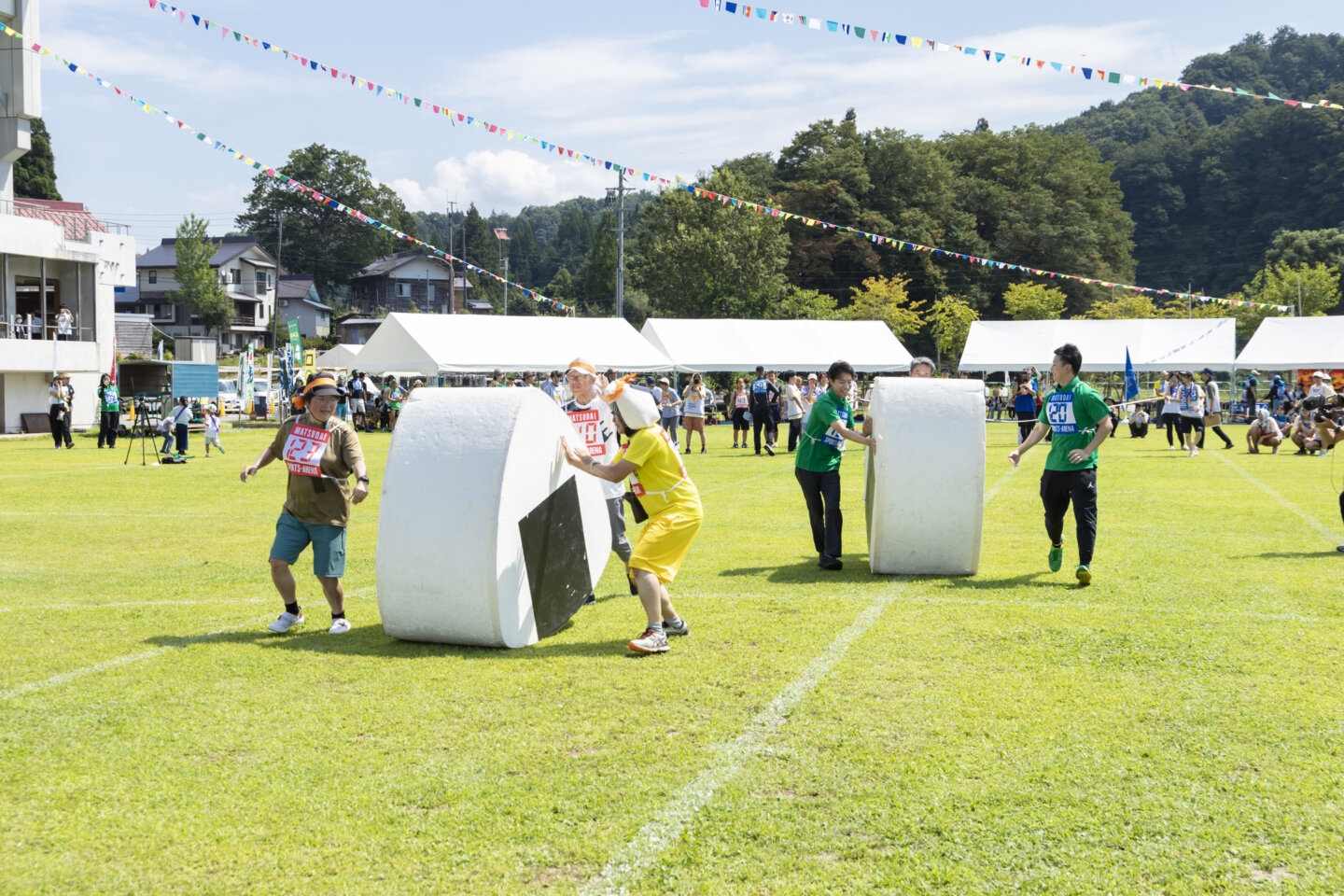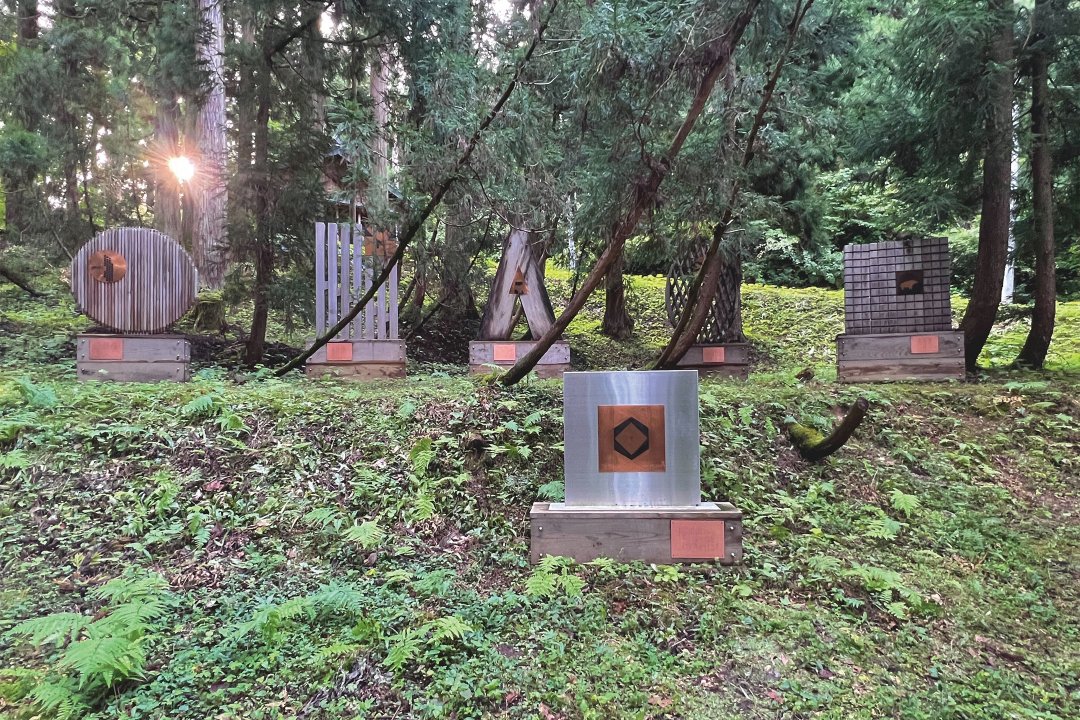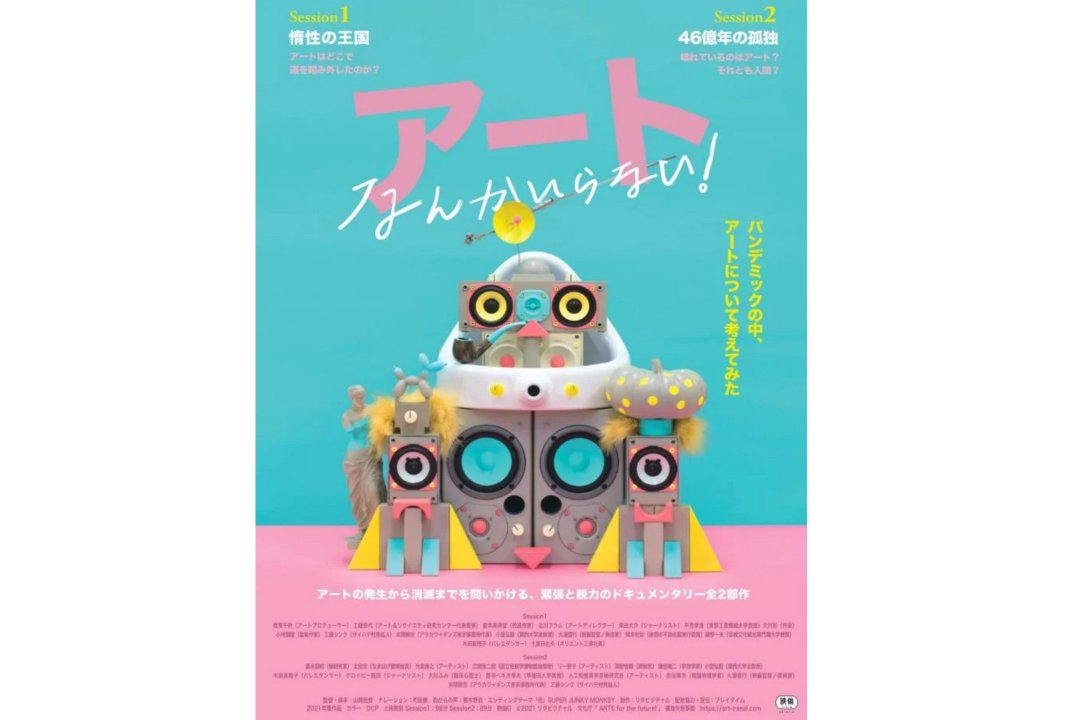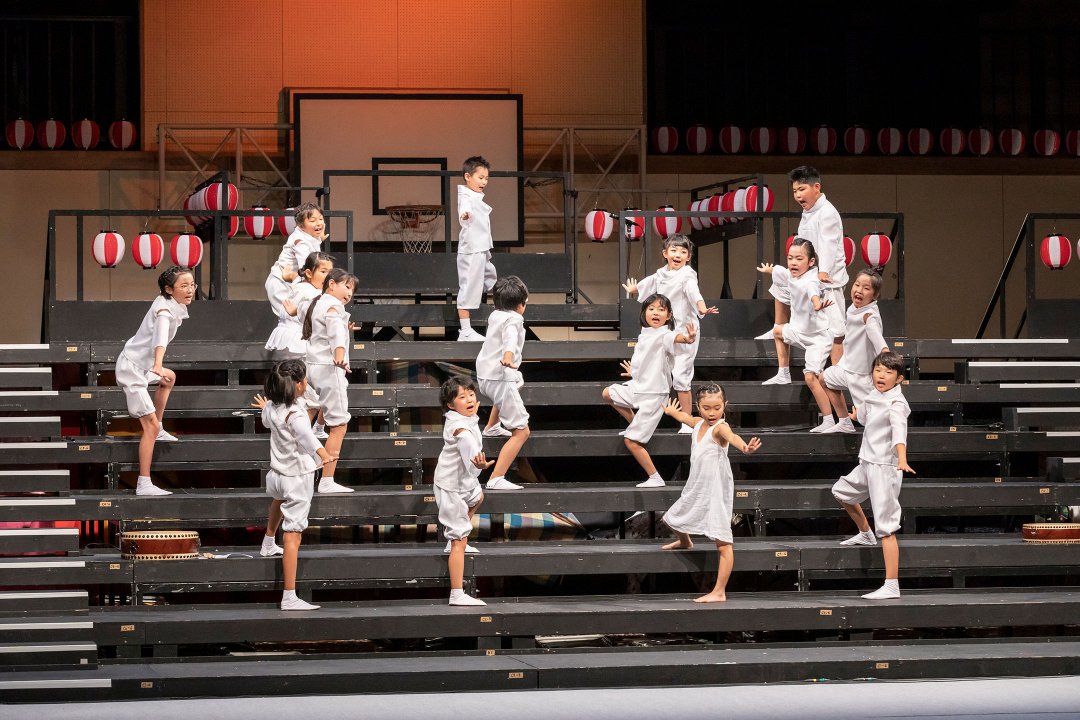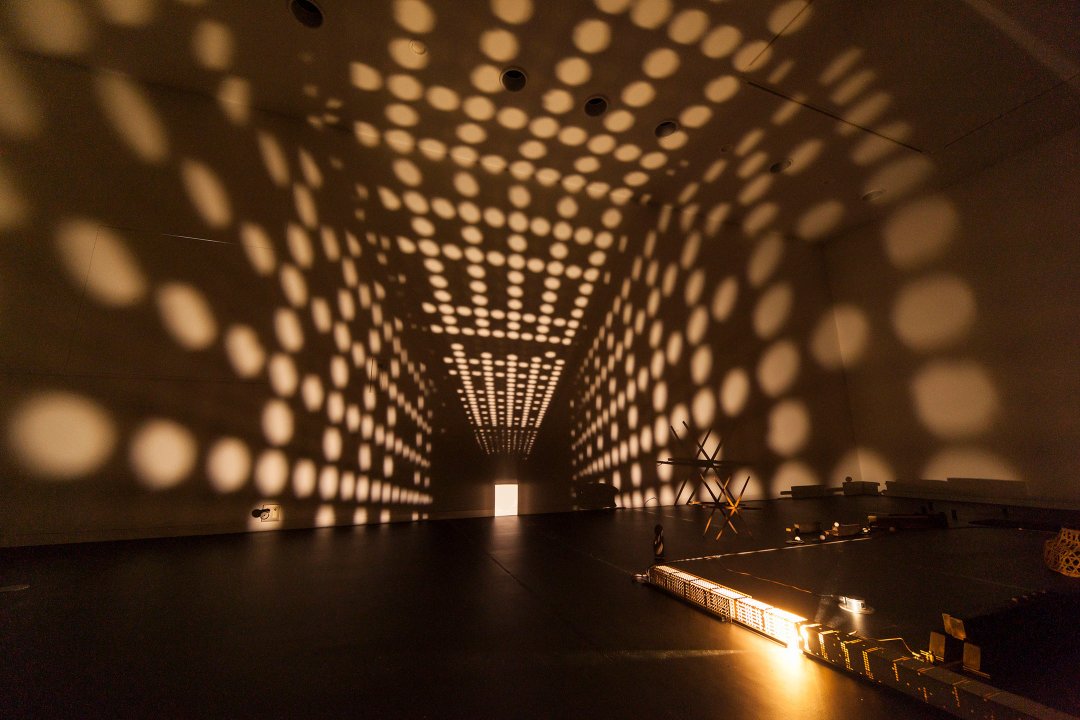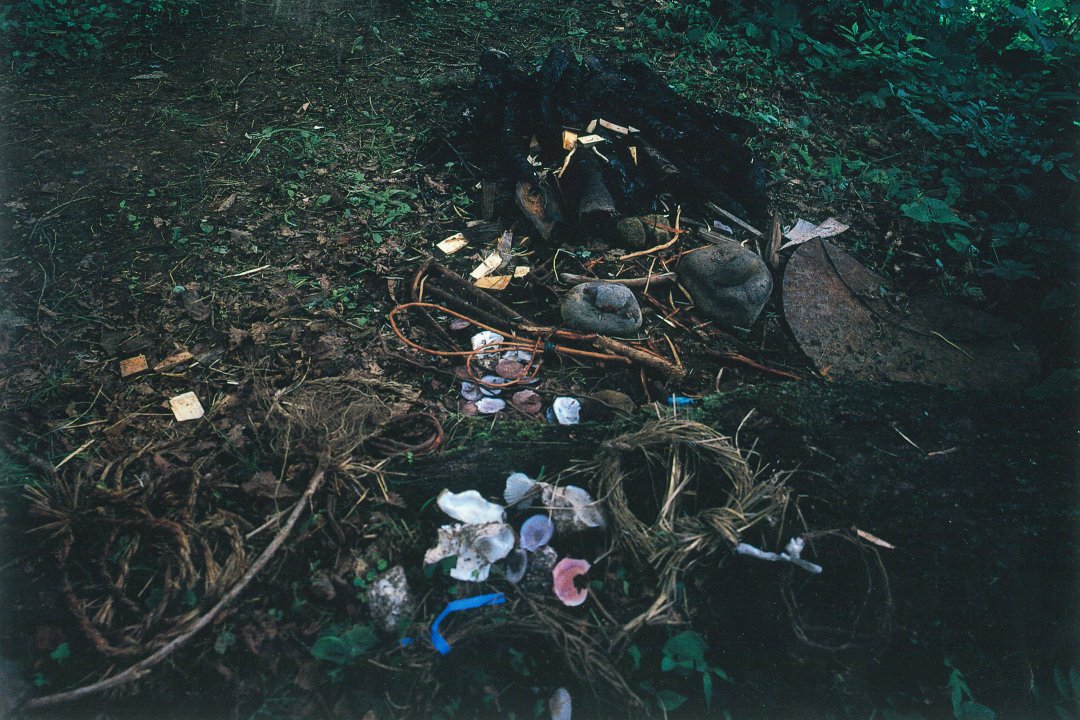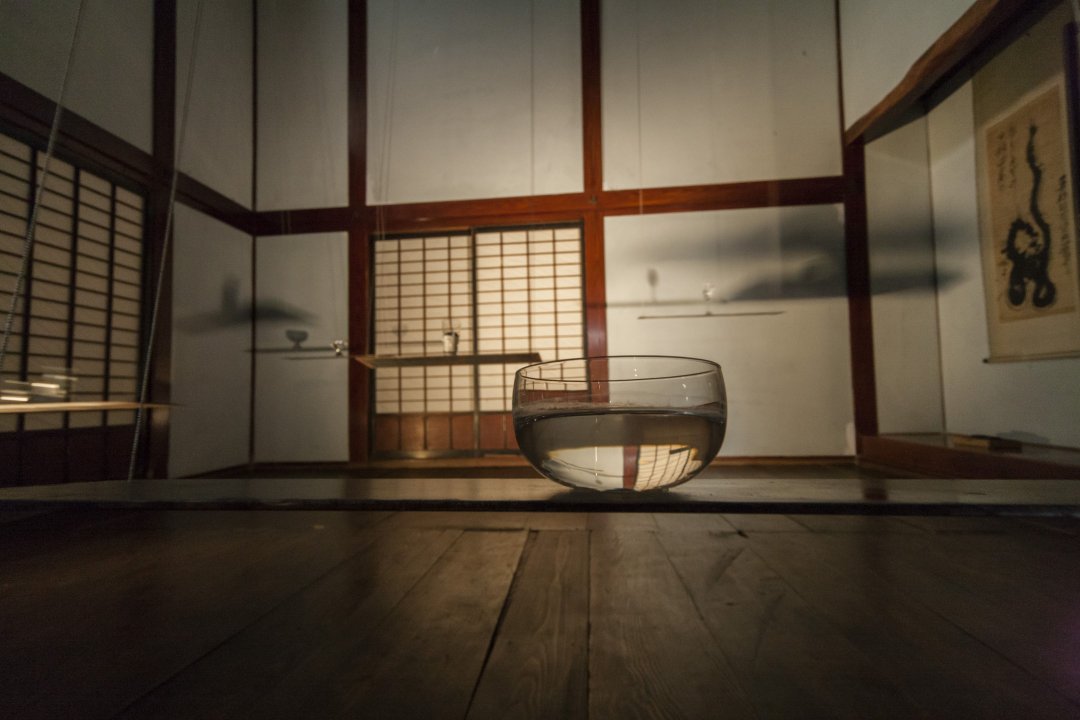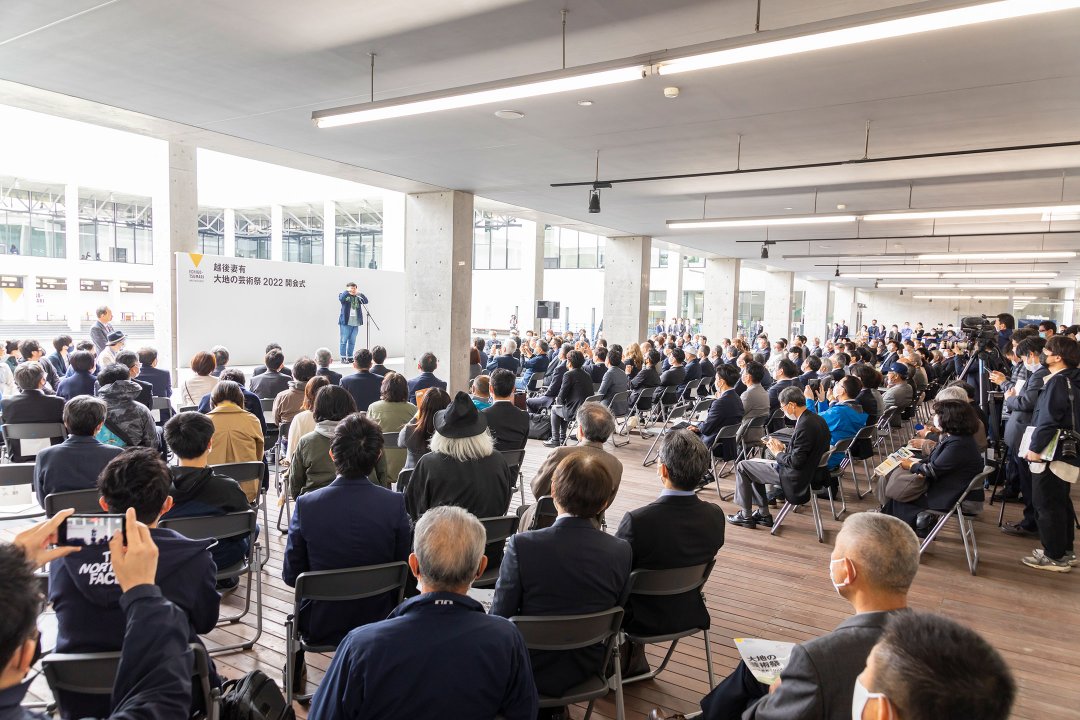Thinking 21st century art in the world from Niigata
Echigo-Tsumari Art Field - Official Web Magazine
Story / ME AND THE ECHIGO-TSUMARI ART TRIENNALE, vol.1-1
Experiencing art with the perspective of “misunderstanding will do!”
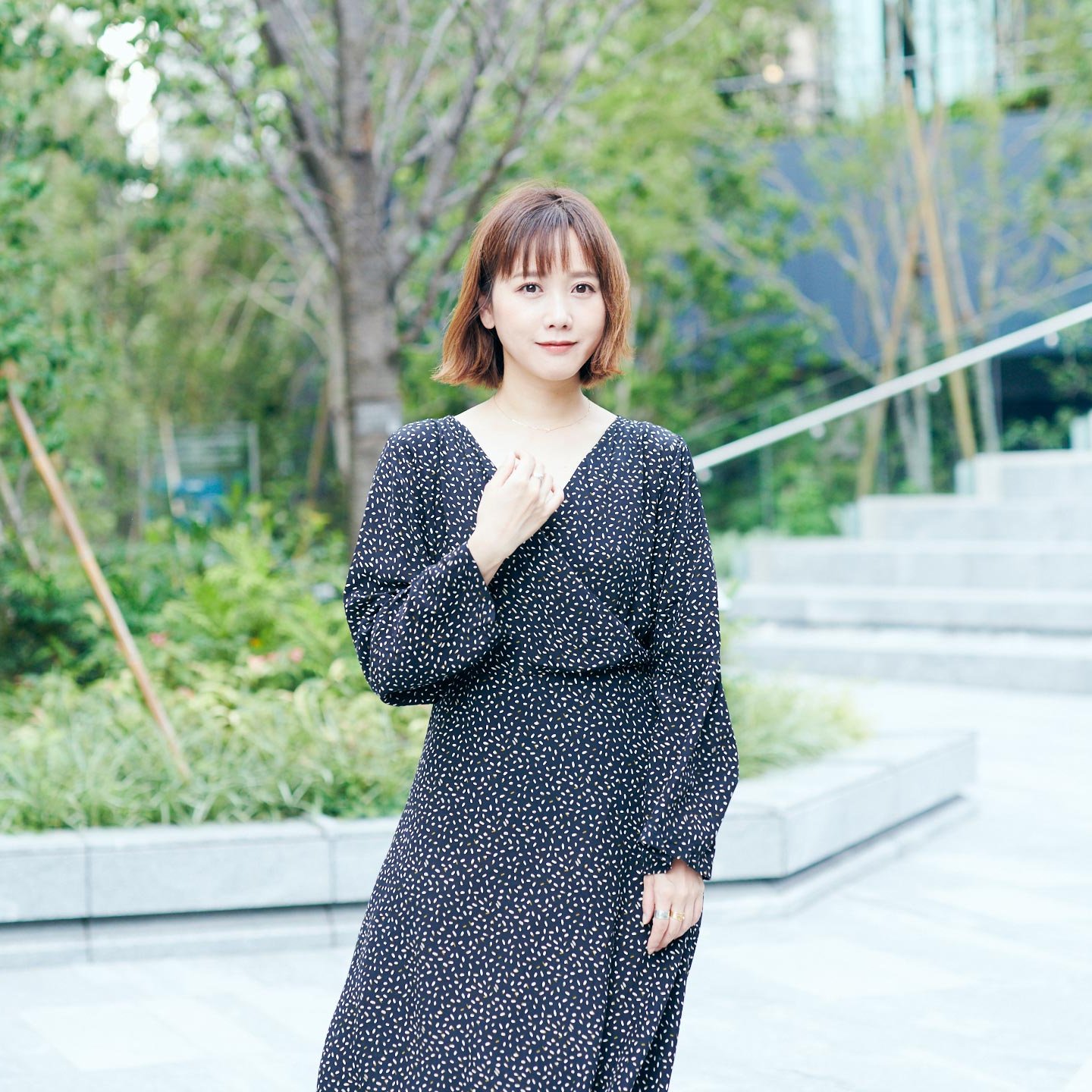
Fashion model / Echigo-Tsumari Art Triennale Official Supporter
Rina Tanaka
The Echigo-Tsumari Art Triennale has been developed with the support from local people and various other supporters. In this series of articles, we have asked such supporters to tell us about the festival from their own perspective. The guest for this issue is Rina Tanaka, fashion model and official supporter of Echigo-Tsumari Art Triennale, who will promote the attraction of the festival through various channels of media. We have asked a range of questions from when she became interested in art, her favourite artworks and tips to enjoy the festival.
text: Haruya Nakajima photo: Nozomu Toyoshima edit: Shinichi Uchida, Tomoyuki Miyahara (CINRA.NET editorial team)
What is ETAT for you?
It is a home for my heart where I can truly be myself without a title.
27 September 2019
Discovering the way to enjoy art
Ma Yansong / MAD Architects「Tunnel of Ligjt」2018 (Photo by Osamu Nakamura)
Rina Tanaka works not only as a fashion model but also works in collaboration with fashion labels as well as publishing some books. She was awakened to art when she visited Setouchi Triennale when she was a university student.

I always enjoyed drawing pictures and making crafts since I was small. However, as I grew up, “art becomes something to see in galleries” and “you wouldn’t understand art unless you have specialist knowledge”. This was why I felt art was difficult to approach even though I was interested in it for some time. Then I went to Naoshima during the Setouchi Triennale and enjoyed immensely. It changed my view completely to “art is something you can feel and enjoy in place.”
Since then Tanaka-san felt that art is close to her. She told us that “I am not an art critic and therefore I would like to treasure my own feeling”.

I was always looking for questions that had answers like what you learn at school. However, art doesn’t have a right or wrong. I like traveling because it is there is no need to conform or to find the same answer or truth as others. I became able to genuinely enjoy art since I felt that “you can misunderstand as much as you like according to your own feeling.”
Tanaka-san smiles as she thinks “misunderstanding will do!”. She then visited Echigo-Tsumari without knowing about it when she was invited to join by Kohey Takashima (Representative CEO of Oisix ra daichi Inc.), the head of official supporter of Echigo-Tsumari Art Triennale.

I was surprised to know that there was such a large-scale art festival happening in the midst of mountains in Niigata. If the attractiveness the Setouchi is “openness of the wide ocean”, I found Echigo-Tsumari holds an atmosphere of the “homeland of heart”. As you enter into the mountains, the atmosphere of the place which is embraced by the nature feels warm. It is a place where you would like to visit again and again.
Favourite artworks of “ETAT”
Tetsuo Sekine「Boys with Red Lion Cloths Returned」2009 (Photo by Osamu Nakamura)
We asked Tanaka-san who has gained memories each time she visited Echigo-Tsumari about her favourite artworks.

What makes me feel “I’ve returned to the festival again!” most is the artwork “Boys with red lion cloths returned”. It is so bizarre that something like jizo appear all of sudden and isn’t it sweet that people put on jumpers on the artwork in winter?
_MG_0405.jpg)
Tetsuo Sekine「Boys with Red Lion Cloths Returned」2009 (Photo by Osamu Nakamura) Lined up along the Shibumi River are 40 boys with red loincloths. The same artwork that was in this place in 2006 has “returned” by popular demand of the village. Toasting the wooden carvings with a burner gives the boys a healthy suntan. Men from Koarato Village remember when the Shibumi River used to be clean, and as boys, wearing their red loin cloths, they would swim in the pools under the waterfalls. This time a particularly large “Red Loin Cloth General” made from natural wood has also made an appearance and has become a symbol of Koarato Village. The towels wrapped around their heads add a humorous touch.

What I fell in love with during ETAT2019 (the seventh iteration of the festival) was “The Kamigo Band – Songs for the Seasons” by Nicolas Darrot, which was presented in a classroom in a closed junior high school building. Figurines with the appearance of animals and yokai (monsters) play in a music band. The design of the stage and details of movements represent such an exquisite workmanship and I could watch them play music for long time. I would love to have it at home.
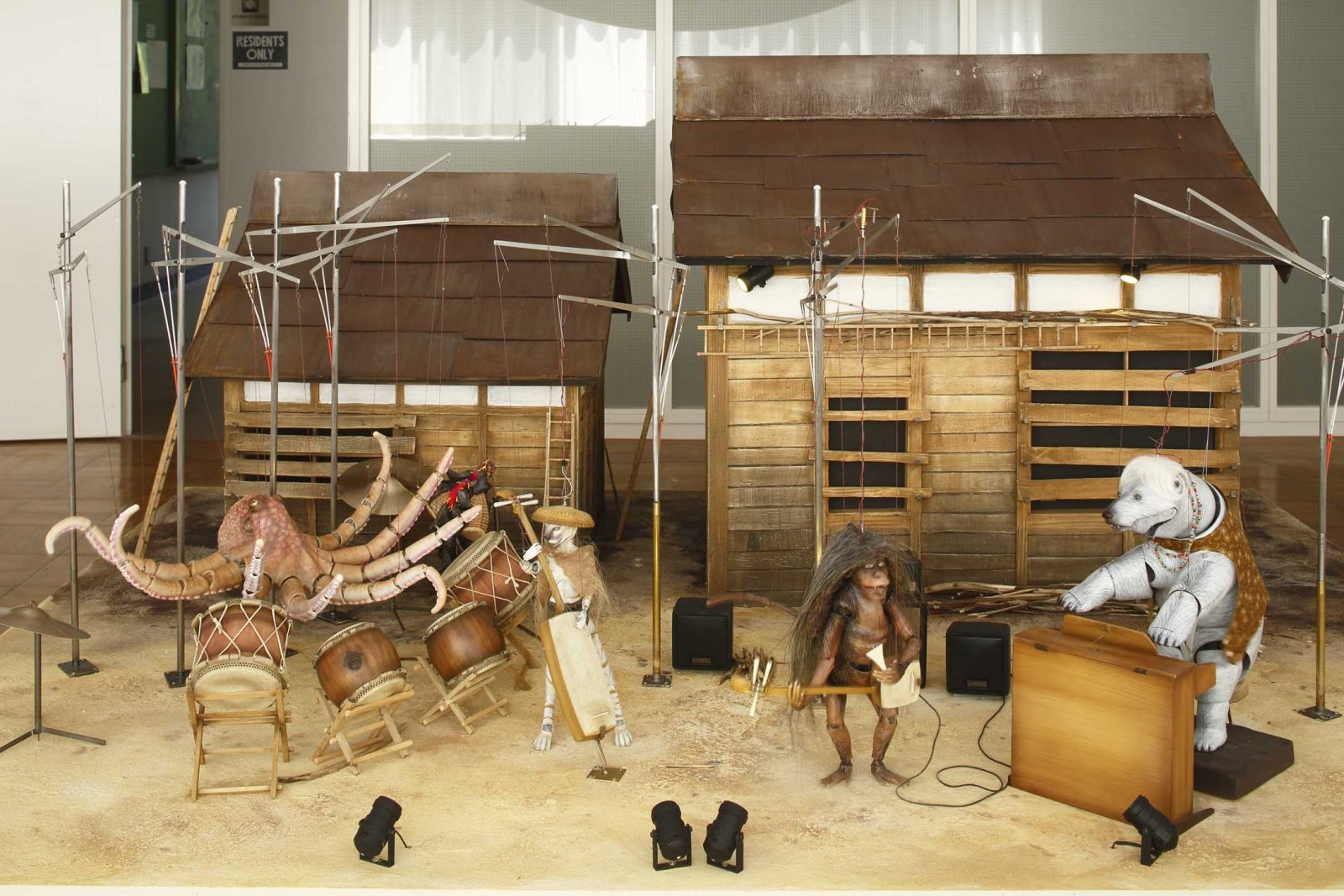
Nicolas Darrot「The Kamigo Band - Songs for the Seasons」2018(Photo by Keizo Kioku) In the classroom of a former junior high school building, a stage is created in the shape of an old house. Hanging from the ceiling of this house is a cloth featuring snow, which is a symbol of this area. Automatic figurines in the shape of animals create the The Kamigo Band, as they perform songs created in collaboration with the local community. This artwork is a theatre-type work that creates a world of stories. [Grant] Institut Francais

Some of the artworks were temporary over the course of the festival and I loved “ATLAS-LAMENTI” by Emma Malig, which was displayed in a shrine building. A sphere like a globe was spinning around making something like a shadow picture. It was so beautiful. The fact that you stepped into a worship hall where you wouldn’t normally haveaccess to made you feel excited as you were doing something that was not ordinarily allowed.

Emma Malig「ATLAS-LAMENTI」2018Having fled her homeland at the age of seventeen after a coup d'etat, the artist regards herself as a traveler, and creates works under themes of wandering, exile, and migration. She makes a delicate and fragile globe out of paper and gauze and engraved with words. The artwork filled with light and sound reflects her longing for her homeland, Chile.
“ETAT” for Tanaka-san was not just artworks. Her experience of staying overnight was something memorable.

What she recommends is Sansho House, a renovation of an old wooden school building. If you go and stay with your friends, it feels like you are on a school excursion. You wouldn’t have much opportunity to sleep in bunk-bed when you are adult. Local villagers cook your meal and you can see an artwork by Leandro Erlich in the common room while you can also play in the gymnasium – what more could you expect for a fun time! (reference: Stay with art – spending time in Sansho House)
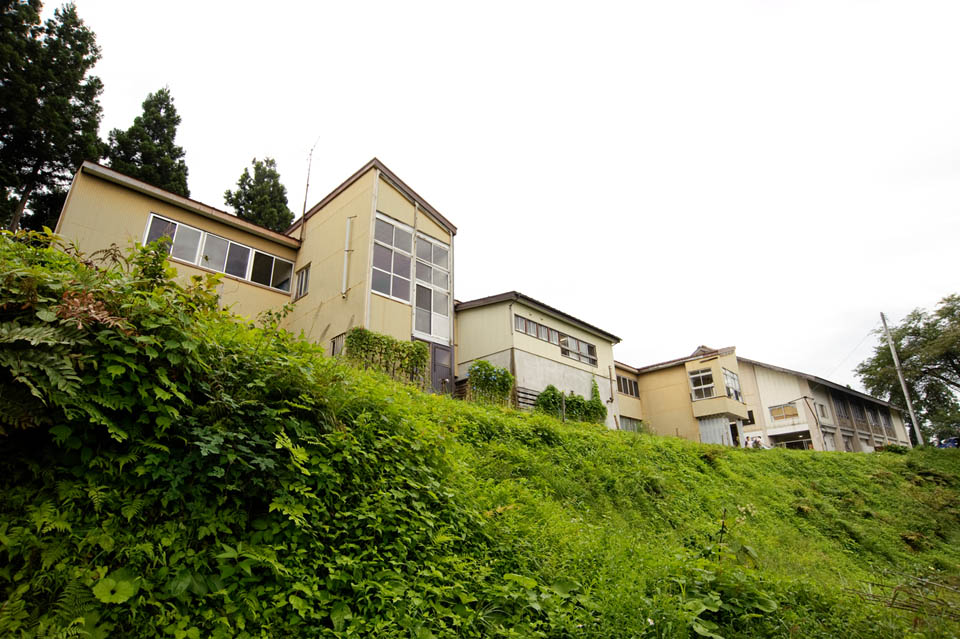
Sansho House (Photo by Hiroshi Noguchi)

Artworks are found in nature, in the classrooms of closed schools, in shrines and old minka houses where there is no signs of human inhabitation and in places filled with human hospitality. That is why artwork are able to help create spaces that are indescribable – a space in harmony even they may appear to be discordant. That is something you can’t experience in art galleries. I would say this is where this festival’s attraction exists.
Tanaka-san fully absorbs the festival through her own sensibility. In the second half of the series, we will ask her about her engagement with the ETAT as an official supporter.
< Continue to Sequel >
Rina Tanaka ( Sequel )
Bring ETAT closer to everyone’s heart








